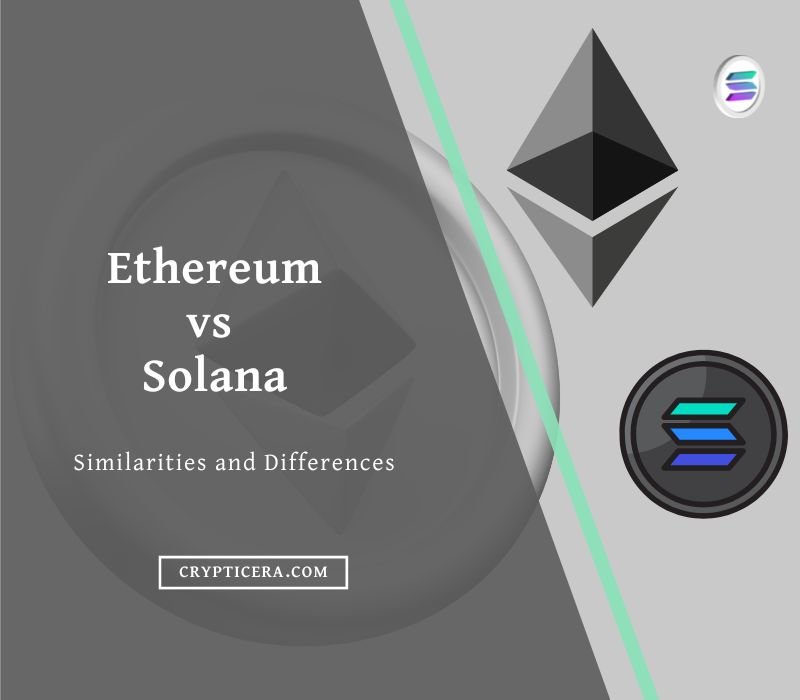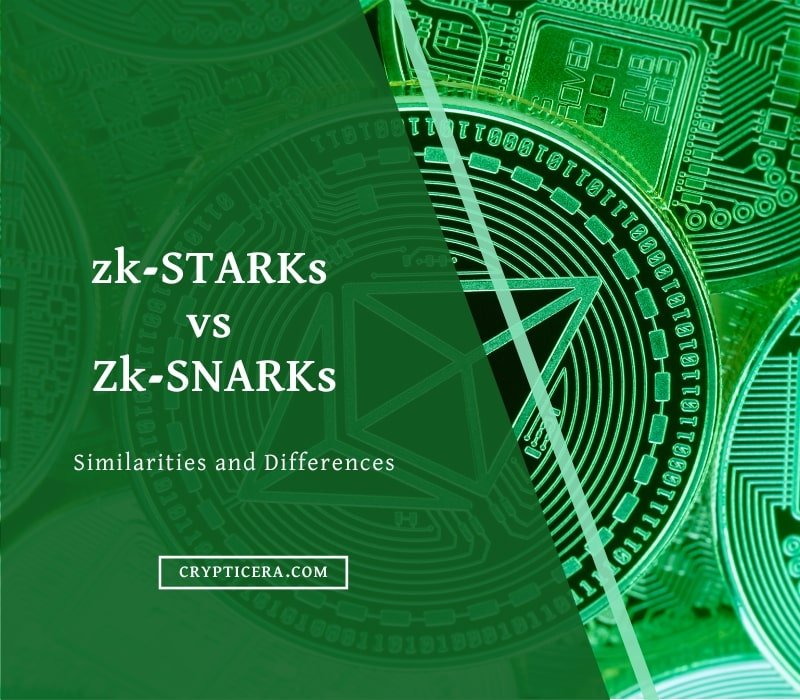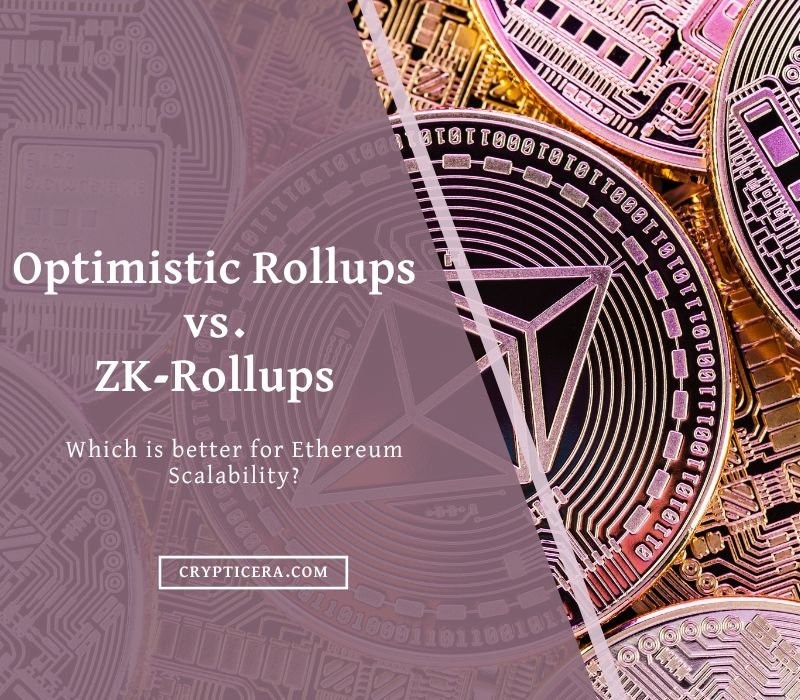As the demand for decentralized finance (DeFi) and non-fungible tokens (NFTs) continues to grow, the Ethereum blockchain has faced challenges in terms of scalability and high transaction fees.
To address these issues, Layer-2 scaling solutions have emerged, offering faster and cheaper transactions while still leveraging the security and decentralization of the Ethereum network.
Two prominent L-2 scaling solutions that have gained significant attention are Loopring and Immutable X [IMX].
In this article, we will talk about the features, benefits, working, limitations, and use cases of “Loopring Vs Immutable X“. And compare them to understand their differences and which one may be more suitable for various use cases.
What is Loopring (LRC)?
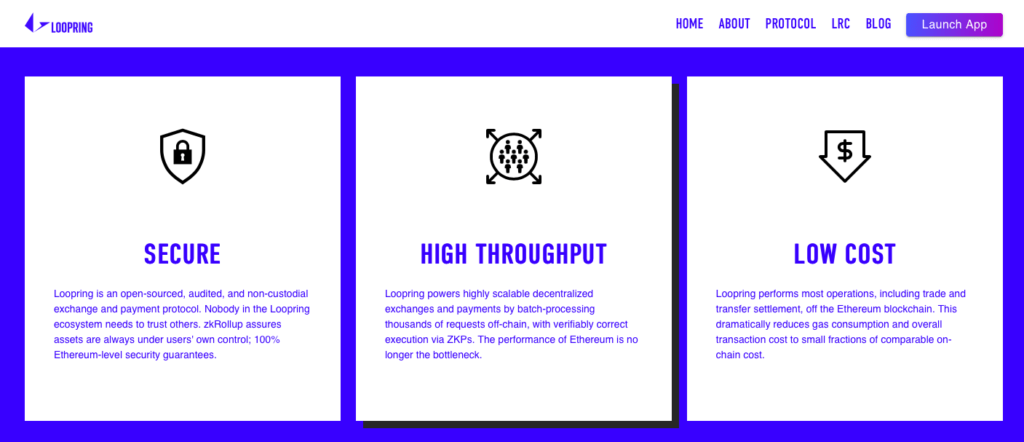
Loopring is a Layer-2 scaling solution that aims to provide high throughput, low transaction fees, and fast confirmation times for decentralized exchanges (DEXs) on the Ethereum blockchain.
It operates as a zkRollup, which is a type of Layer-2 solution that aggregates transactions off-chain and submits proof of the validity of those transactions to the Ethereum mainnet.
This allows Loopring to significantly reduce gas fees and improve transaction times compared to traditional Ethereum transactions.
Loopring also offers non-custodial trading, where users have full control of their funds and can trade directly from their wallets without the need for any intermediaries.
Related: Best Perpetual DEXs for Leverage Trading
What is Immutable X (IMX)?
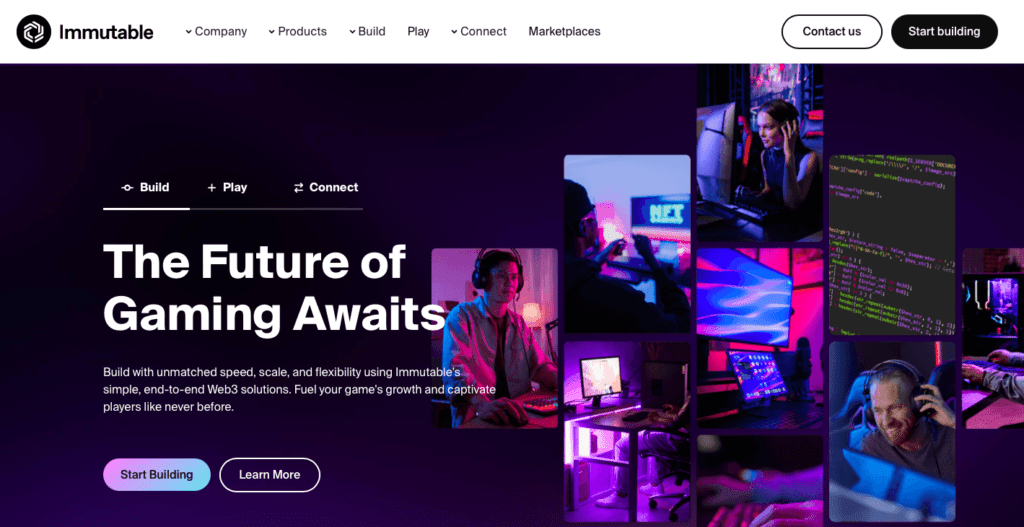
Immutable X is another zk-Rollup Layer-2 scaling solution that focuses on providing fast, secure, and gas-free transactions for NFTs on the Ethereum blockchain.
It operates as a Layer-2 sidechain, where NFTs are minted and traded off-chain, and a summary of the transactions is submitted to the Ethereum mainnet for verification.
IMX provides high throughput and fast confirmation times, making it suitable for high-volume NFT marketplaces and applications. Immutable X also provides a seamless user experience with easy integration with popular wallets and marketplaces including GameStop.
Additionally, while it offers gas-free transactions, users may need to pay a one-time fee to bridge their NFTs from Ethereum to Immutable X and vice versa.
Loopring vs Immutable X: Comparison of Features
| Feature | Loopring | Immutable X |
|---|---|---|
| Token | LRC | IMX |
| Market Cap | ||
| Type | zkRollup | Layer-2 sidechain [zk-Rollup] |
| Transactions | Off-chain with zk-proofs | Off-chain with PoA consensus mechanism |
| Transactions Throughput | 2,025 TPS | 9,000 TPS |
| Transaction Fees | Low | Gas-free |
| Security | High | High |
| Decentralization | Non-custodial trading | Non-custodial NFT trading |
| NFT Support | ERC20 tokens, NFTs | NFTs |
Use Cases and Applications of Loopring and Immutable X
Loopring vs Immutable X: Both have various use cases and applications in the blockchain ecosystem.
Some of the potential use cases of these Layer-2 scaling solutions include:
- Decentralized Exchanges (DEXs): Loopring’s zkRollup and Immutable X’s Layer-2 sidechain can provide high throughput and low transaction fees. DEXs built on Loopring or Immutable X can offer users a seamless and cost-effective trading experience, with the added benefit of non-custodial trading.
- NFT Marketplaces: Both Loopring and Immutable X are well-suited for NFT marketplaces, as they offer high throughput for NFT transactions. NFT marketplaces can provide an easy and cheap platform for buying, selling, and trading NFTs.
- Gaming and Collectibles: Loopring and Immutable X can also be used for gaming and collectible applications, where NFTs are used for in-game items, virtual assets, and digital collectibles.
- Tokenization and Asset Management: These Layer-2 scaling solutions can provide a secure and efficient platform for tokenizing assets and managing ownership rights, with the added benefit of low transaction fees and fast confirmation times.
- DeFi Applications: They can provide high throughput and low transaction fees for various DeFi operations, such as token swaps, lending, and borrowing.
Loopring vs Immutable X: Similarities & Differences
Technology and Architecture
Both Loopring and Immutable X utilize zkRollup technology to achieve layer-2 scaling for Ethereum. However, they differ in their approach to implementing zkRollup.
Loopring uses a hybrid approach that combines on-chain and off-chain components. The transactions are processed off-chain, and only the cryptographic proofs are submitted to the Ethereum blockchain.
This allows Loopring to achieve high throughput and low-latency transactions while reducing gas fees.
On the other hand, Immutable X follows a pure off-chain approach. All the transactions and data are processed off-chain, and only the cryptographic proofs are submitted to the Ethereum blockchain.
This enables Immutable X to provide fast transactions for NFTs, but it also requires users to trust the IMX validators.
Winner: Both Loopring and Immutable X use zk-Rollups for high scalability and throughput.
Scalability and Transaction Speed
Loopring vs Immutable X: Both claim to provide high scalability and transaction speed compared to the Ethereum mainnet.
Loopring can process up to 2,025 transactions per second (TPS) on Ethereum, which is significantly higher than the Ethereum mainnet’s capacity of around 15 TPS.
This makes Loopring a suitable solution for DEXs that require fast and high-volume trading.
On the other hand, Immutable X claims to achieve a throughput of up to 9,000 TPS, which is even higher than Loopring’s capacity.
It makes Immutable X a scalable solution for NFT marketplaces that require quick and efficient transactions for minting, trading, and transferring NFTs.
Winner: Immutable X (IMX) offers 5x more transaction speed than Loopring (LRC), achieving up to 9,000 TPS.
Network Security
Both Loopring and Immutable X are fully decentralized and non-custodial, which means that users have complete control over their assets and their private keys.
This provides users with greater security and ensures that their funds are not vulnerable to hacks or theft.
Immutable X, somewhat, relies on a set of trusted validators to process transactions and generate cryptographic proofs. While this approach allows for fast and efficient transactions, it also introduces a level of centralization, as users need to trust the validators.
However, Immutable X has plans to decentralize its validator set in the future, which may address this concern.
Winner: Loopring is more Decentralized than Immutable X.
Tokenomics and Governance
Tokenomics and governance are important aspects of any blockchain solution, as they determine the economic incentives for users and the decision-making processes.
Loopring has its native token called LRC, which is used for transaction fees, staking, and participating in the governance of the protocol.
Loopring’s governance is community-driven, with LRC token holders having the power to vote on proposals and upgrades to the protocol.
Immutable X, on the other hand, uses its native token called IMX for transaction fees and staking. However, Immutable X’s governance is currently centralized, with decisions made by the Immutable X team
Pros and Cons of Loopring
➜ Pros:
- High throughput and low-latency transactions for DEXs
- A hybrid approach with on-chain and off-chain components provides security and decentralization
- LRC token for transaction fees, staking, and governance
➜ Cons:
- Limited to DEX use cases, and may not be suitable for other applications
- Governance currently community-driven, may pose challenges in decision-making
Pros and Cons of Immutable X
➜ Pros:
- High throughput and low-cost transactions for NFTs
- Pure off-chain approach for efficient NFT transactions
- IMX token for transaction fees and staking
➜ Cons:
- Reliance on trusted validators introduces centralization
- Governance currently centralized may lack decentralization
What is zk-Rollups?
zk-rollups (Zero-Knowledge Rollups) is a Layer 2 scaling solution for blockchains, including Ethereum. It is a technology that allows a large number of transactions to be processed off-chain, while still maintaining the same level of security as on-chain transactions.
With zk-rollups, instead of processing each transaction on the blockchain, a batch of transactions is processed off-chain and then submitted to the blockchain as a single transaction.
zk-rollups uses zero-knowledge proofs to ensure that the off-chain batch of transactions is valid and that no fraudulent transactions have been included.
Related:
- Optimistic Rollups Vs ZK-Rollups
- 7 Best ZK-Rollup Projects
- Top 4 Best ZkEVM Projects
- Zk-STARKs Vs Zk-SNARKs
Final Thoughts: Which is better?
So, Which is better, Loopring or Immutable X? Which should you choose between, Loopring vs Immutable X?
While Loopring is focused on providing layer-2 scaling for DEXs, Immutable X specifically targets NFTs.
Both solutions utilize zkRollup technology for fast and cost-effective transactions, but they differ in their approach to implementing it and their governance models.
However, Loopring’s limited use cases and community-driven governance may pose challenges, while Immutable X’s reliance on trusted validators and centralized governance may raise concerns.
FAQs
- Is Loopring better than Immutable X?
It depends on a user’s specific needs and preferences. Loopring is better for trading ERC-20 tokens, while Immutable X is better for gas-free trading of NFTs.
- Are Loopring and Immutable X secure?
Yes, both Loopring and Immutable X are fully decentralized and non-custodial, which means that users have complete control over their assets and their private keys.
- Which Platform is faster, Loopring or Immutable X?
While both Loopring and Immutable X offer fast transaction speeds, Immutable X is slightly faster due to its use of zk-rollups and PoA consensus mechanism for processing transactions off-chain.
- Are there any fees associated with trading on Loopring or Immutable X?
Yes, there are transaction fees associated with trading crypto on Loopring and NFTs using Immutable X, but Loopring’s fees are generally lower than Immutable X’s fees.
- Can I trade both ERC-20 tokens and NFTs on Loopring and Immutable X?
Loopring is primarily focused on trading ERC-20 tokens, while Immutable X is primarily focused on trading NFTs. However, both exchanges may support other types of assets in the future.
